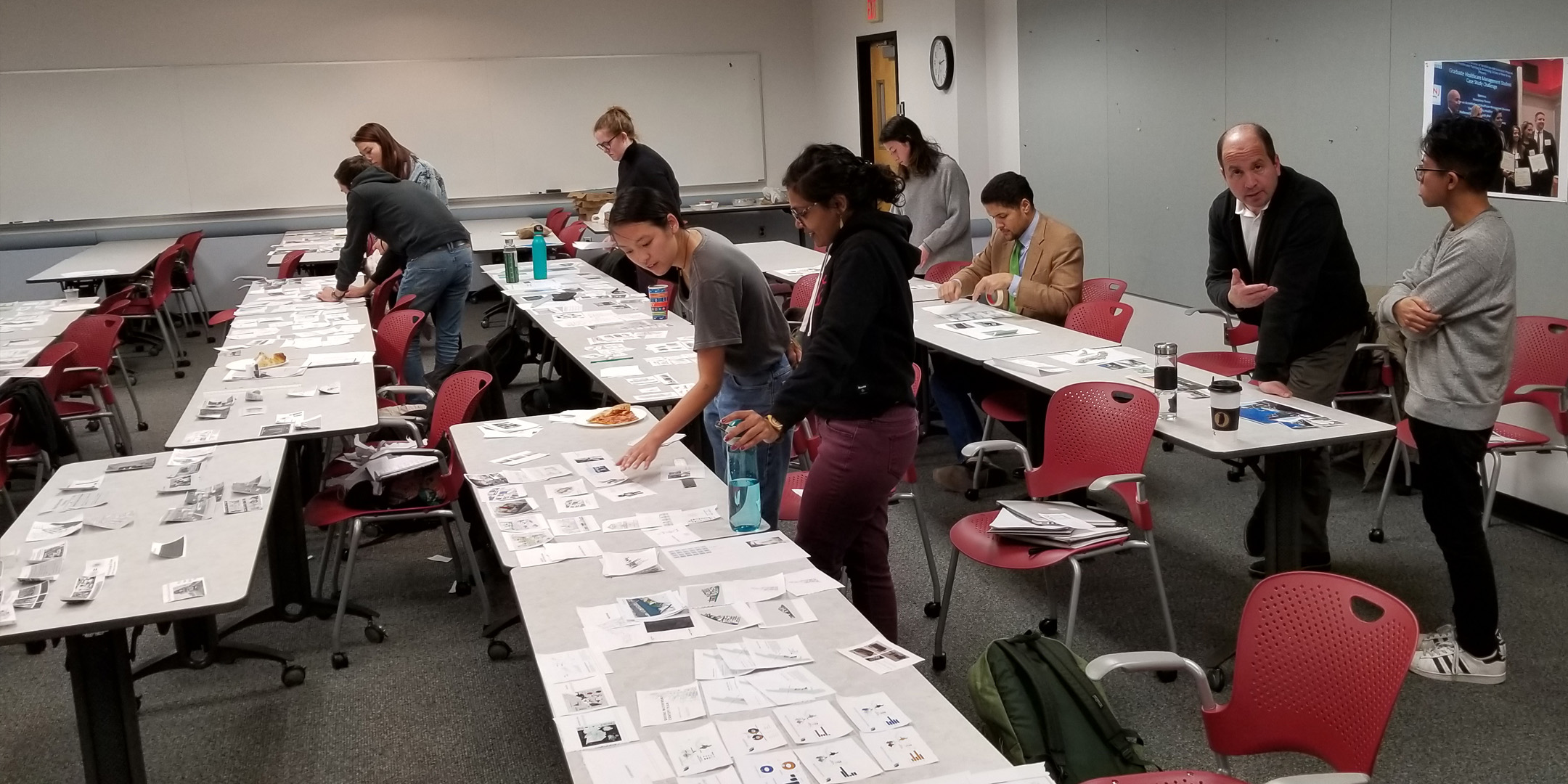The Bloustein School hosted a two-day Professional Portfolio Development Workshop for both graduate and undergraduate students on Friday, January 17 and Saturday, January 18. Organized by the school’s Office of Student and Academic Services and EJB | D E S I G N S, the 18 student participants received guidance on how to use InDesign and Photoshop to compile layouts and build infographics to supplement portfolio designs, and worked on completing rough drafts of portfolios of their work.
“The first day of the workshop was extremely rewarding for the students as they realized the amount of work they completed and how the portfolio could look in a monograph-styled layout,” said Juan Ayala, Assistant Professor of Practice at the Bloustein School and organizer of the workshop. “We discussed the work they had done, and students had the opportunity to practice how they would talk about their portfolios with a prospective employer.”
He noted that a graduate student with a concentration in community development observed that once her portfolio was organized, her work was centered on the mental health impact people—especially children and the elderly—experience when their environments undergo significant change. And an undergraduate in his junior year was pleased to realize that—once he had better organized his portfolio—he had completed a set of urban development projects ranging from rural to large town redevelopment.
Professor Tony Nelessen, who has been teaching urban design and professional practice for more than four decades, discussed the importance of networking and maintaining relationships with peers in the industry. As the portfolios shaped up throughout the day, students had the opportunity to learn more about the interests of others in their cohort, and engaged in conversations about their journey at the Bloustein School.
“When they graduate, successful design students should be able to show potential employers a well-organized, professional portfolio,” said Ayala. “I was very happy by the sincere and strong effort students put into designing their portfolios.”
Armed with a solid understanding of what comprises a solid portfolio and how to best highlight their work, students were sent home with the task of finalizing their designs. Workshop participants can then submit their final portfolio drafts to Professor Ayala and Career Management Specialist Andrea Garrido during the middle of February, who will then send these submissions to a select group of school alumni and planning professionals for a final review.
“The entire process students went through of putting their portfolios together during these two days provided an amazing opportunity for them to visualize the culmination of their experiences and projects throughout their Bloustein career,” said Andrea Garrido, Career Management Specialist. “Now, they will be better prepared to present themselves and their work to prospective employers. These portfolios and describing them to employers should be seen as a form of storytelling that will be much more compelling and memorable to those interviewing them.”

Having the portfolios reviewed by current planning professionals before the students send it out to major employers in March—when many employers are accepting job applications and portfolios—is beneficial in many ways, Professor Ayala noted. “Not only are the students increasing their network of future colleagues, but they will get a boost of confidence from having an outside, professional opinion from those already in the field.”
EJB | D E S I G N S is a student-led group of both planning students and faculty looking to improve their hand-drawing skills and digital graphic methods. In addition to learning and teaching digital and hand-drawing techniques, the group encourages networking with professionals, faculty, and students. The group hosts practice sessions and planned events to help create leaders and highly skilled designers to challenge or discover urban design issues, learn professional development skills, and prepare to enter the professional workforce.
